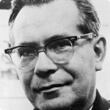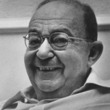American dreamers: how the left changed a nation
Description
More Details
9780307596703
Also in this Series
Published Reviews
Choice Review
Kazin (Georgetown) provides a new interpretation of the American Left--not as a series of political movements that could not attract enough support from centrist Americans to achieve the transformations in US society that its members believed were important, but instead as an intellectual impetus that led to those reforms becoming increasingly acceptable and finally attainable. This survey of two centuries of the US experience with leftist thought begins with abolitionism in the 1820s and ends with Fahrenheit 9/11. In between, Kazin focuses on a pantheon of reform-minded thinkers and doers who believed that US society and its economic system could be improved to provide people with the proper benefits they should receive. The author also provides biographical information to set each reformer in the correct historical surroundings. His list of "Good Reading," included instead of a formal bibliography, lists secondary works necessary for an understanding of leftist thought. They include mainly secondary sources and websites. This book is a useful addition to collections in US history for its reminder that contemporary political thought has antecedents that even its opponents need to understand, and for its lesson that reform often requires more time to attain than its originator planned. Summing Up: Recommended. All levels/libraries. J. P. Sanson Louisiana State University at Alexandria
Booklist Review
The most enduring impact of the radical Left can be found not as much in American politics as in American culture, Kazin says. He traces leftist reform in movements from abolitionism to feminism, the labor movement, and socialism, looking at issues from racial and sexual equality to sexual pleasure outside of marriage as he documents the Left's influence on the American sense of altruism. He begins by examining the abolitionist movement and its effect on the later civil rights movement. Later, he focuses on labor issues and socialism, communism and the anti-Communist movement, and how the Old Left morphed into the New Left. Profiling major figures, he recounts the socialist sensibilities of Ralph Waldo Emerson, Elizabeth Cady Stanton, and Horace Greeley. He makes no claim that this is a comprehensive examination of the Left in the U.S. but affords a fascinating inspection of the convergence of ideals of individual freedom and communal responsibility ideals often in conflict in American politics and how that convergence has influenced American politics and culture for generations.--Bush, Vaness. Copyright 2010 Booklist
Publisher's Weekly Review
Feminists, labor militants, civil rights stalwarts, and socialists have captured America's heart-though rarely its votes-according to this perceptive history of the radical left. Kazin (The Populist Persuasion), editor of Dissent magazine, surveys visionaries, organizers, and rabble-rousers, including abolitionists and free-love communards of the 1830s, Gilded Age utopian novelists and temperance crusaders, feisty Wobblies and avant-garde bohemians, patriotic Popular Front Communists and '60s firebrands. From this tumult of movements and personalities-everyone from John Brown to Naomi Klein, Dr. Seuss to Noam Chomsky-Kazin discerns continuities: radicals, he contends, succeed by influencing liberals rather than winning power, and by championing individual freedom and self-fulfillment; they fail when they attack religion and nationalism, advocate economic leveling, or advance sectarian purity and Marxist dogmas. Kazin's argument that the socialist economic program was always "stillborn" while the Left's cultural project-social equality, identity politics, artistic freedom, sexual liberation, and antiauthoritarianism-has triumphed is not new, and it lends the book a tone more of eulogy than of celebration; still this is a lively and lucid synthesis of a vital political tradition. Photos. (Aug.) (c) Copyright PWxyz, LLC. All rights reserved.
Kirkus Book Review
A spirited defense of the positive role played by left-wing radicals in shaping American society.Beginning with an analysis of the anti-slavery movement of the 1820s, Kazin (History/Georgetown Univ.; A Godly Hero: The Life of William Jennings Bryan, 2006, etc.) suggests that the effectiveness of radical social protests should not be judged by their failure to achieve significant political power but by their ability to catalyze mass movements that affect mainstream politics. The author writes that reformers in the centers of power depend upon the existence of a radical movement from below. In his view, the actions of "radical social gospelers" such as Harriet Beecher Stowe and Martin Luther King Jr. far outweighed the influence of socialists and communists. Kazin describes the International Workers of the World, founded in 1905, as "an organizer of beautiful losers." Their agitation for "One Big Union" that would include all working people and "run the economy for the benefit of all" inspired broad-based popular support but no lasting victories, at least in contrast to the more narrowly defined trade-union objectives of the International Ladies Garment Workers Union, formed during the same period. Both, however, played a part in laying the groundwork for the emergence of the CIO in the 1930s, as well as other significant movements in the following decades.A coherent, wide-ranging analysis of a century of political and social activism in America.]] Copyright Kirkus Reviews, used with permission.
Booklist Reviews
The most enduring impact of the radical Left can be found not as much in American politics as in American culture, Kazin says. He traces leftist reform in movements from abolitionism to feminism, the labor movement, and socialism, looking at issues from racial and sexual equality to sexual pleasure outside of marriage as he documents the Left's influence on the American sense of altruism. He begins by examining the abolitionist movement and its effect on the later civil rights movement. Later, he focuses on labor issues and socialism, communism and the anti-Communist movement, and how the Old Left morphed into the New Left. Profiling major figures, he recounts the socialist sensibilities of Ralph Waldo Emerson, Elizabeth Cady Stanton, and Horace Greeley. He makes no claim that this is a comprehensive examination of the Left in the U.S. but affords a fascinating inspection of the convergence of ideals of individual freedom and communal responsibility—ideals often in conflict in American politics—and how that convergence has influenced American politics and culture for generations. Copyright 2011 Booklist Reviews.
Publishers Weekly Reviews
Feminists, labor militants, civil rights stalwarts, and socialists have captured America's heart—though rarely its votes—according to this perceptive history of the radical left. Kazin (The Populist Persuasion), editor of Dissent magazine, surveys visionaries, organizers, and rabble-rousers, including abolitionists and free-love communards of the 1830s, Gilded Age utopian novelists and temperance crusaders, feisty Wobblies and avant-garde bohemians, patriotic Popular Front Communists and '60s firebrands. From this tumult of movements and personalities—everyone from John Brown to Naomi Klein, Dr. Seuss to Noam Chomsky—Kazin discerns continuities: radicals, he contends, succeed by influencing liberals rather than winning power, and by championing individual freedom and self-fulfillment; they fail when they attack religion and nationalism, advocate economic leveling, or advance sectarian purity and Marxist dogmas. Kazin's argument that the socialist economic program was always "stillborn" while the Left's cultural project—social equality, identity politics, artistic freedom, sexual liberation, and antiauthoritarianism—has triumphed is not new, and it lends the book a tone more of eulogy than of celebration; still this is a lively and lucid synthesis of a vital political tradition. Photos. (Aug.)
[Page ]. Copyright 2010 PWxyz LLC































